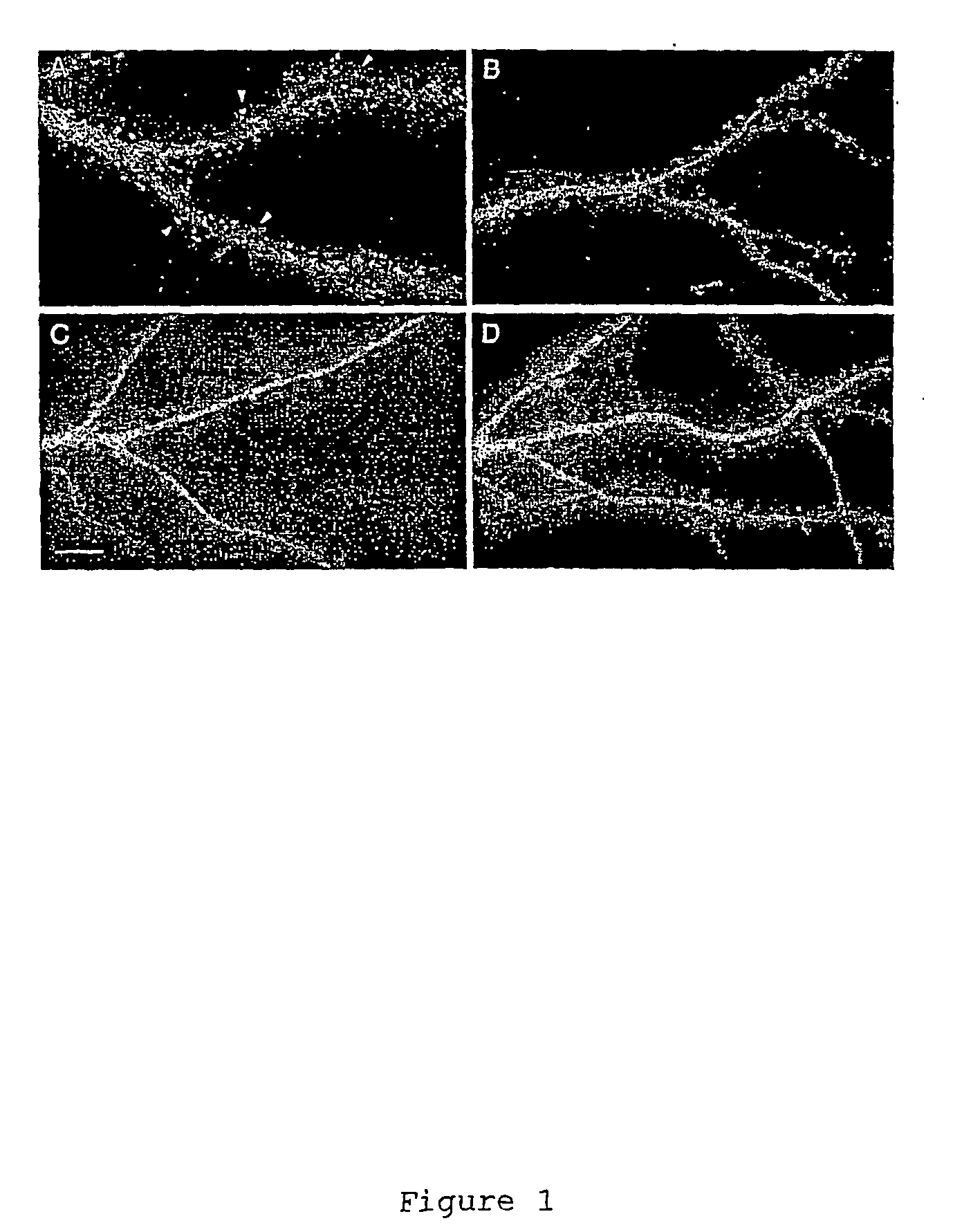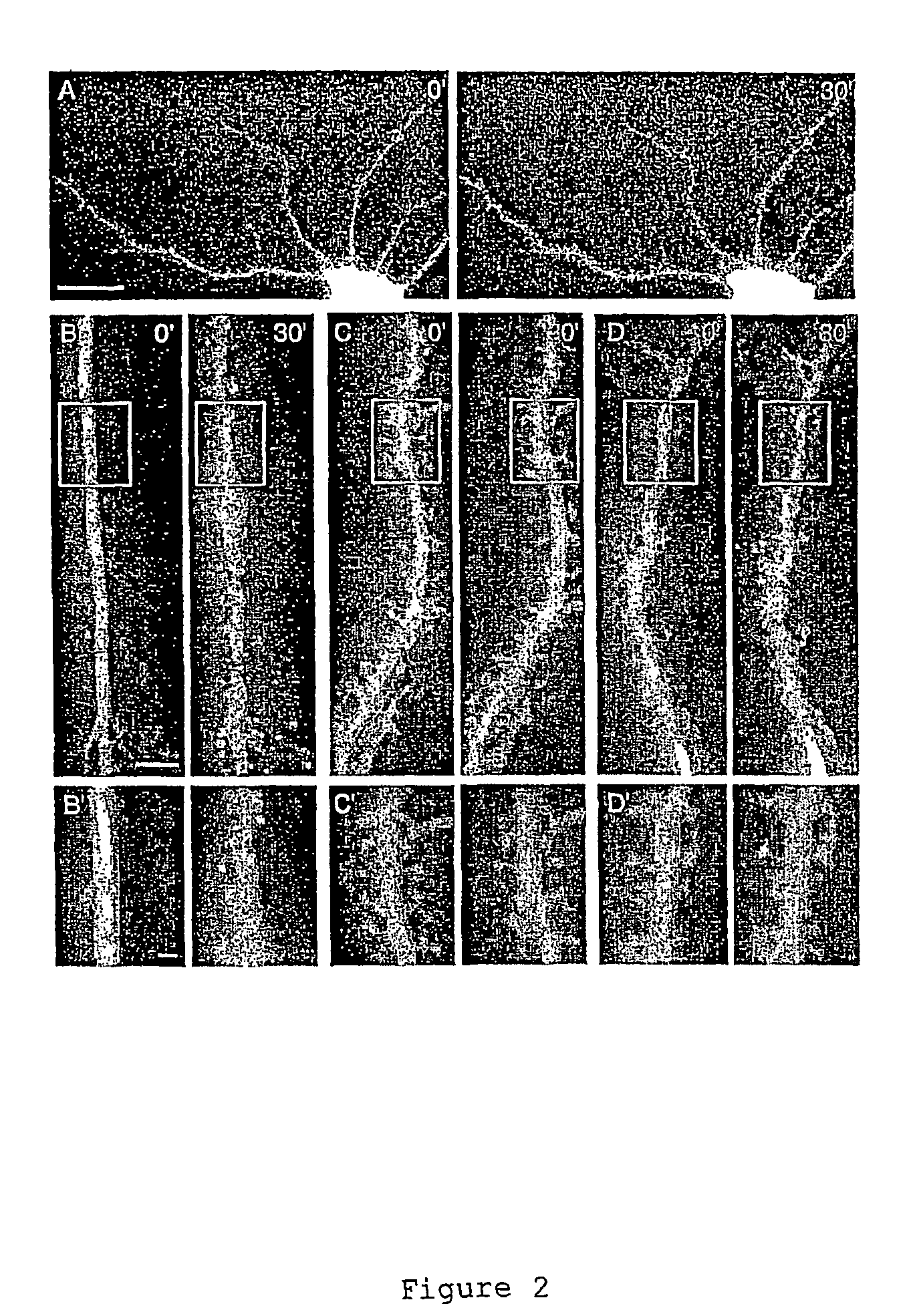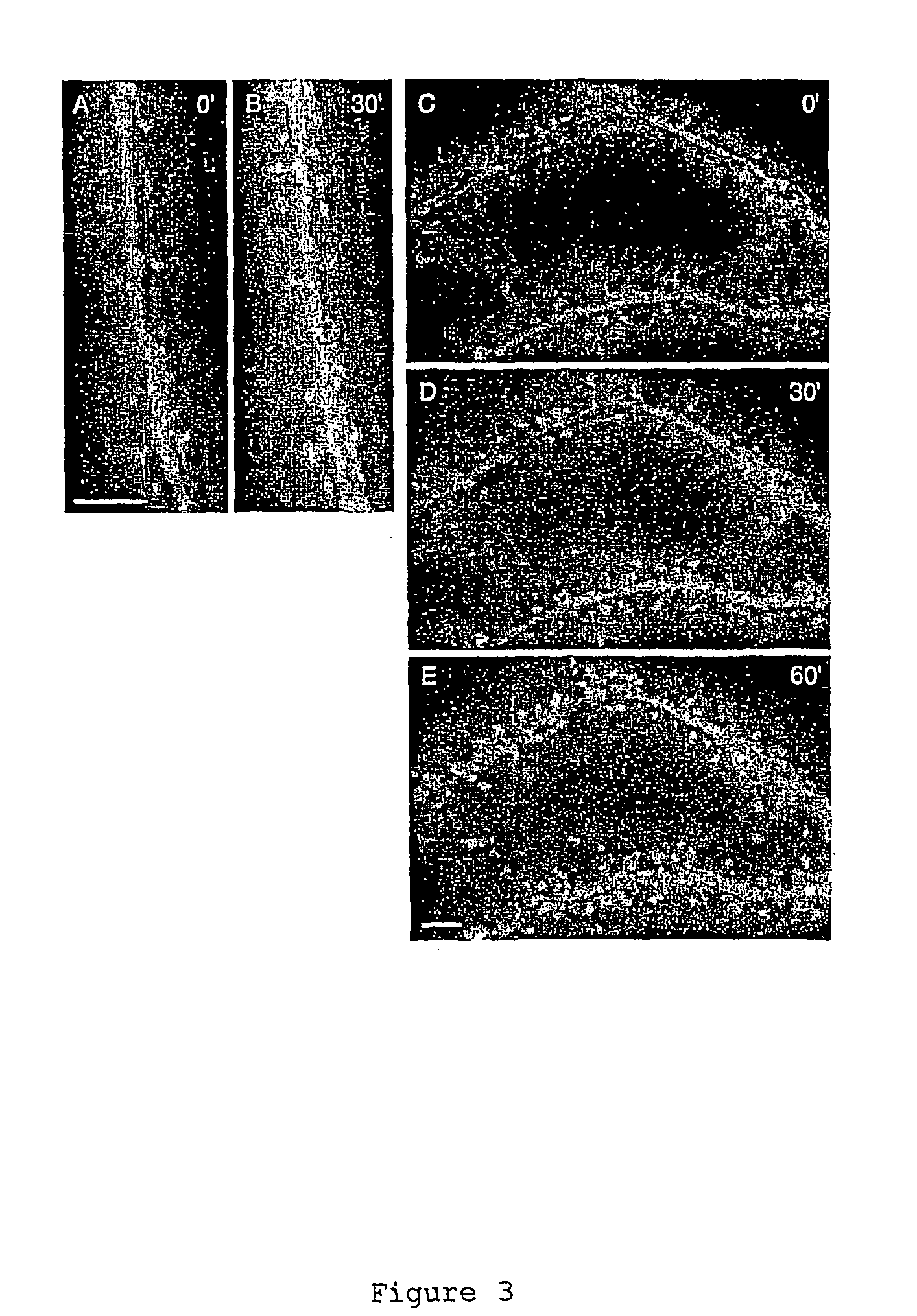Markers and screens
a technology applied in the field of markers and screens, can solve the problems of mismatch in timing and have not been identified to date, and achieve the effects of enhancing the detectability of disease phenotype, increasing the detectability of synapse on activation, and improving the detection efficiency of disease phenotyp
- Summary
- Abstract
- Description
- Claims
- Application Information
AI Technical Summary
Benefits of technology
Problems solved by technology
Method used
Image
Examples
example 1
Profilin I and Profilin II in Cultured Hippocampal Neurons
[0136] Expressing GFP-tagged profilin I and profilin II in cultured hippocampal neurons revealed differences in their distribution within dendrites (FIG. 1 and Table 1). In 4% of cells expressing profilin II (n=239) the GFP-tagged protein was highly enriched in heads of dendritic spines (FIG. 1A) whereas in others cells spine enrichment was weak or undetectable (FIG. 1B). GFP-tagged profilin I showed only weak or no enrichment in spines (FIG. 1C). For comparison the distribution of unmodified GFP in control cells is shown in FIG. 1D.
[0137] Corresponding results with gelsolin are shown in Table 5. ‘G2-6-GFP’ is a based on a gelsolin mutant which lacks the domain 1 (and hence the severing function) of whole gelsolin.
example 2
NMDA Receptors Regulate Profilin II Accumulation in Spine Heads
[0138] The strong enrichment of profilin II in spines of some cells but not others suggested that its cytoplasmic localization might be activity dependent. To test this hypothesis we exposed hippocampal neurons expressing GFP-tagged profilin II or profilin I or unmodified GFP to 10 μM glutamate (FIG. 2). Images of living cells captured before and after treatment showed a strong redistribution of profilin II-GFP into the heads of spines that started 5 to 8 minutes after glutamate addition and was maximal after 30 minutes (FIGS. 2A and B). Glutamate treatment also produced a weaker shift of GFP tagged profilin I into spines (FIG. 2D) which, however, never approached the high levels seen for profilin II. The same treatment did not change the distribution of unmodified GFP (FIG. 2C).
[0139] To determine which sorts of glutamate receptor might be involved in profilin targeting we treated profilin II-GFP transfected cells wit...
example 3
Increased Calcium Levels are Required for Spine Targeting of Profilin II
[0141] The involvement of NMDA receptors in the accumulation of profilin II in spines suggested that increases in cytoplasmic Ca levels may be required to trigger profilin II targeting. Consistent with this idea, profilin II levels in spines failed to increase when cells were treated with glutamate in the absence of extracellular Ca2+ (Table 3, see also supplementary figure). To determine whether elevation of intracellular Ca2+ is alone sufficient to trigger the targeting process, we treated neurons with thapsigargin (1 μM) which results in the release of Ca2+ from internal stores and leads to influx of extracellular Ca2+ (21, 22). Following thapsigargin treatment 10 out of 15 cells tested showed accumulation of profilin II in spines (Table 3). When cells were treated with thapsigargin in the absence of extracellular Ca2+ there was only weak redistribution of profilin II in a minority of cells (Table 3a) sugges...
PUM
| Property | Measurement | Unit |
|---|---|---|
| volume | aaaaa | aaaaa |
| pH | aaaaa | aaaaa |
| pH | aaaaa | aaaaa |
Abstract
Description
Claims
Application Information
 Login to View More
Login to View More - R&D
- Intellectual Property
- Life Sciences
- Materials
- Tech Scout
- Unparalleled Data Quality
- Higher Quality Content
- 60% Fewer Hallucinations
Browse by: Latest US Patents, China's latest patents, Technical Efficacy Thesaurus, Application Domain, Technology Topic, Popular Technical Reports.
© 2025 PatSnap. All rights reserved.Legal|Privacy policy|Modern Slavery Act Transparency Statement|Sitemap|About US| Contact US: help@patsnap.com



